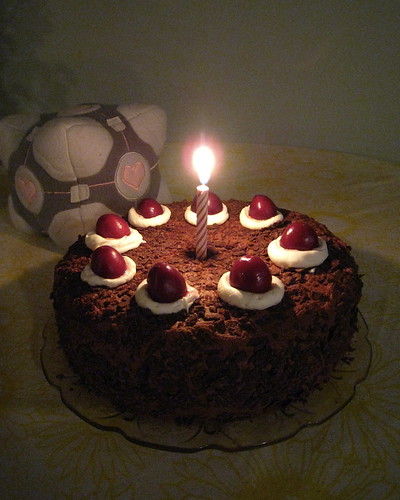One of the acronyms people like to use around here is FUD. Not the Far-side kind (which I think of EVERY TIME someone says the acronym,) but the triad of Fear, Uncertainty, and Doubt. FUD can kill anything: morale, confidence, even whole projects which are actually great ideas. It comes from the unknown. Ever looked at a particularly difficult day ahead of you, and wonder how on earth you were going to manage it all, and wanted to pull the blankets over your head? That’s FUD.But just like that bad day, we can kill FUD by breaking down the problem and asserting a plan. It doesn’t even have to be the RIGHT plan! It just has to be something. I can’t count the number of times that I’ve started out with Plan A, then deviated COMPLETELY off-course, and yet somehow finally still arrived at my destination :)
This forces me to conclude that I’m usually starting with the wrong plan. And so I present to you the most basic, and seemingly most idiotic advice I can give for killing FUD: make the WRONG plan, and move forward. It doesn’t matter that it’s the wrong plan. The trick is, we know that it’s probably the wrong plan, we expect it, and we can course-correct as we go.
When we come up with a best-guess and write it down, it’s amazing how much clarity will flood in. Right away, we begin to build an understanding of reasons why that will or won’t work, and can begin to make corrections immediately.
If we never make that first hypothesis, if we never set out in a direction, we can’t learn anything, because there’s no new input. We’re just locked up in our own heads, iterating through what we already know.
When we’re prepared to be wrong, we know that everything does not hang in the balance, and we can learn from our mistakes. Many neuroscientists argue that this is in fact the ONLY way to learn: by making mistakes, understanding the corrections, and learning from them. But until we have a plan and start moving, we can’t even make mistakes. We’re too paralyzed by FUD to take a step in any direction.
Making a hypothesis isn’t about being the decider; it’s not about staying the course. It’s about moving in one direction until we get an inkling that it’s probably the wrong direction, then figuring out why, and correcting. If we are being little scientists, running our little experiments, and we expect to be wrong, it takes the sting out. We can make mistakes without personal failing. And mistakes are how we learn. It’s about progress and revision, not perfection right out of the gate.
So now that we’ve got a plan, and we can see what’s good and bad about it, what about another plan? And another? Think about it. If one plan is great for making some mistakes, learning from them, and building clarity, why wouldn’t 50 plans help you learn 50 times as many things, and build 50 times as much clarity??
This is how some of the best artists work. They come up with 5, 10, 20, 50 different concepts, different hypotheses, and then take the time to understand what is awesome—and what is crappy—about each one. Their final design has fewer flaws than the rest of ours, because they took the time to make their mistakes in the beginning, when they can afford to make them.
 |  |
| Yam Hand and Jelly Man- Rejected Concept Art from BioShock | |
So the next time you’re stuck on something, you’re scared it can’t be done, you know you have to make progress but you can’t, STOP. Take a deep breath. Make a hypothesis, make 20 of them, and just see where things go. Chances are, you’ll be wrong. And that’s half the fun!




